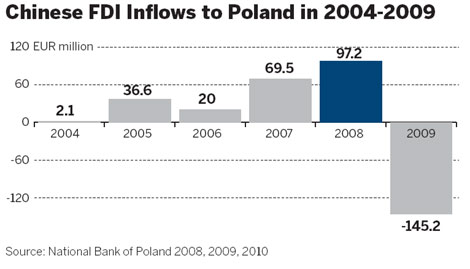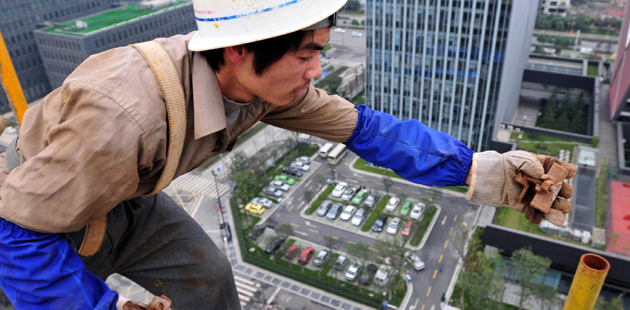Eyeing up Poland for investment
Updated: 2011-11-14 09:02
By Wang Xiaotian (China Daily)
|
|||||||||||
|
A Polish booth at an exhibition in Xiamen, Fujian province. Chinese investors in the European country are advised to pay more attention to investment risks after some companies suffered setbacks. [Photo / China Daily] |
East Europe is attracting interest due to low labor costs and good growth
WARSAW / CRACOW, Poland - Michal Wojtaszek, 27, a public relations specialist at the Polish Information and Foreign Investment Agency (PIFIA) in Warsaw, can use chopsticks pretty well although he has never been to China.
Since the beginning of the year, the agency has accepted more than 60 delegations from China to visit Poland, the sixth-largest economy and a new growth engine in the European Union.
Pawel Tynel, executive director of tax at Ernst & Young Sp. z o.o. based in Cracow, said the number of the company's Chinese clients has risen in recent years, as businesses from the world's second-largest economy are increasingly interested in investing in Poland.
Those clients include Huawei Technologies Co Ltd, a leading global information and communications technology solutions provider.
"There will be more clients from China. We are seeing their great interest in investment in financial institutions, mining, manufacturing, and buying shares in existing companies," he said.
Chinese foreign direct investment (FDI) to Poland has grown rapidly over recent years. According to figures from the National Bank of Poland, China invested 97.2 million euros ($134.47 million) in 2008, a 50-fold rise since 2004. However, in 2009, the flows were negative against the backdrop of the financial crisis, cutting the FDI stock value from China by 107.5 million euros to 130.9 million euros.
By the end of 2009 there were 392 entities with Chinese capital in the country. In 378 of them, Chinese capital accounted for more than 50 percent, according to the Polish Central Statistical Office.
Since 2006 the number of Chinese companies in Poland had grown by nearly 423 percent by the end of 2009, it said.











